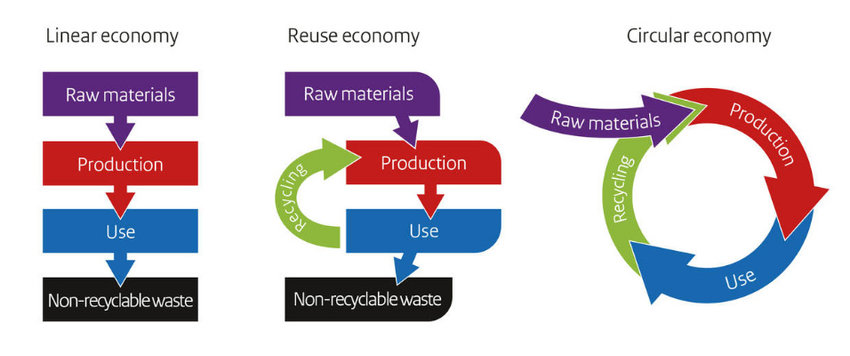Operational Stories
Is the Reuse of Second-Hand Products Circular, or Just Slightly Less-Bad Linear?
HKUST has adopted a Second-hand Goods Purchasing Policy, taking a first step towards a more sustainable purchasing habit. While buying second hand reduces waste, it is essential to recognize the distinction between this practice and the broader concept of Circular Economy.
The second-hand approach gives products a second life, which extends a product’s lifespan and reduces resource consumption for extracting and processing new materials to accommodate for the demand for new products. However, purchasing second-hand is more accurately part of a Reuse Economy, meaning that the linear model is still at play. Eventually, these products will reach their end-of-life phase and end up in the landfill, contributing to various environmental impacts.

Figure 1. Main differences among linear economy, reuse economy and circular economy. Source: https://www.researchgate.net/figure/Main-differences-among-linear-economy-reuse-economy-and-circular-economy_fig2_342765144
In contrast, Circular Economy challenges the linear model by addressing the systemic challenges of resource consumption, waste generation, and unsustainable production practices. At its core, Circular Economy is guided by three principles: designing out waste and pollution, keeping products and materials in use, and regenerating natural systems, aiming to design products with longevity, repairability, upgradability, and recyclability in mind.
Going beyond product lifespan extension, Circular Economy actively seeks to reduce resource consumption at the source and eliminate waste and pollution at the end-of-life, forming a circular flow of resources and products. This transformative approach is reshaping entire industries, supply chains, policies, and has encouraged the development of innovative business models that facilitate sharing and collaborative consumption, such as rental service.
Carpet company Interface is an inspiring example of a company embracing Circular Economy. They have redesigned their products for easy disassembly and rebuilt their manufacturing line to process old carpets for making new ones. This business model advocates for Extended Producer Responsibility (EPR), implementing initiatives like take-back programs to ensure proper disposal and recycling of used carpets, further closing the loop.
By embracing Circular Economy, we can break free from the linear model's limitations, promote a regenerative and restorative economy where products are created with as little new resources and waste generated as possible.